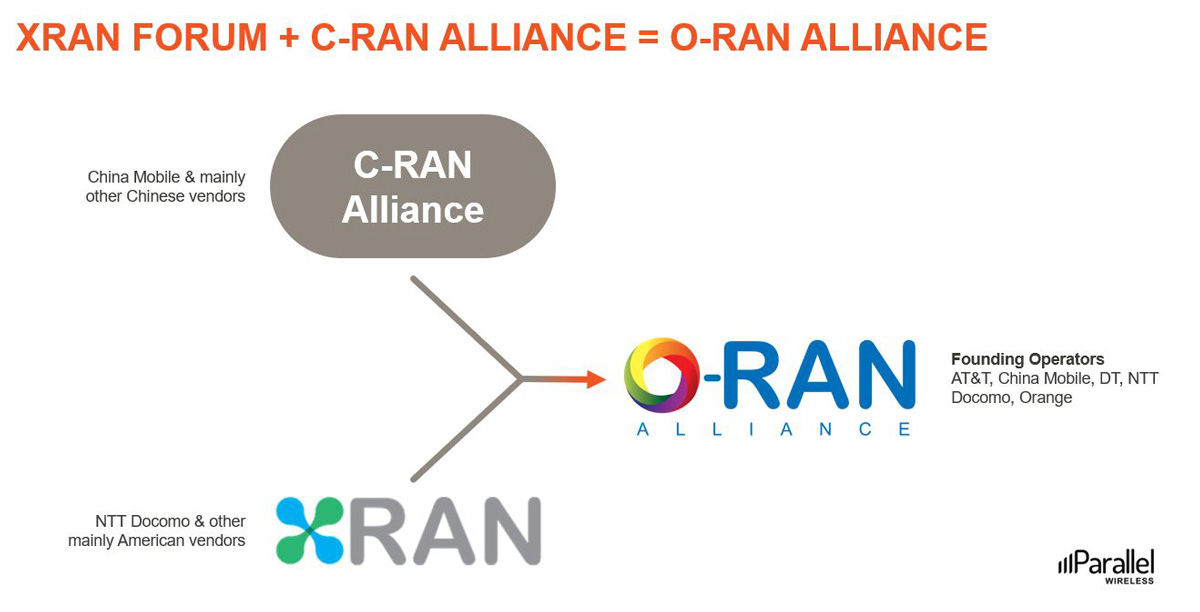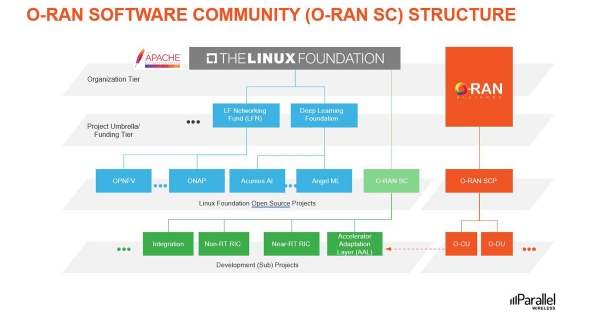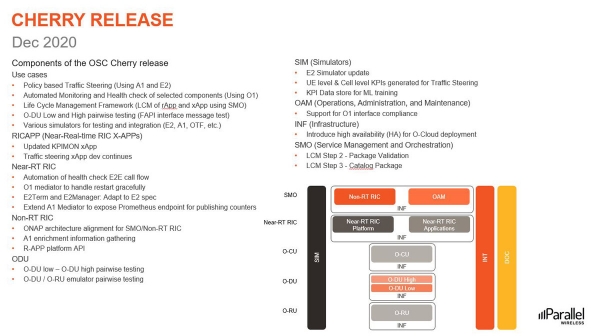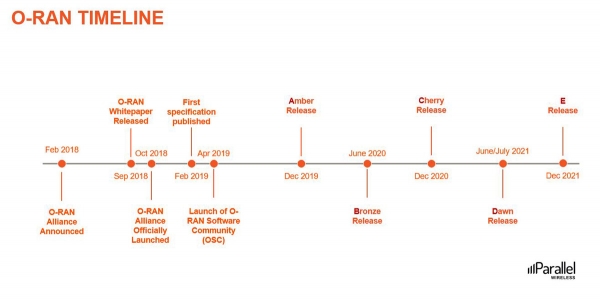Introduction to O-RAN Timeline and Releases
While preparing for our first physical event of the year, MWC 2021, in June in Barcelona, I am reminded that the O-RAN Alliance was announced three years ago at MWC 2018. It was formed by the merger of two different organizations, namely the C-RAN Alliance and the XRAN Forum.
The C-RAN alliance consisted of China Mobile and many other Chinese vendors while the XRAN Forum consisted of US, European, Japanese, and South Korean vendors and operators. AT&T, China Mobile, Deutsche Telekom, NTT Docomo and Orange were the initial founding operators of the O-RAN Alliance. Since then, several more operators, vendors, integrators, etc. have joined.

Just after the formation of the O-RAN Alliance, they began to have preliminary discussions with the Linux Foundation and jointly started to explore cooperation opportunities. Around September/October 2018, many different things happened. The O-RAN Alliance was officially launched. The first O-RAN whitepaper, ‘Towards an Open and Smart RAN’, laying out the vision to drive the truly Open and Smart RAN was published. In addition, an open-source focus group was formed within the O-RAN Alliance.
In April 2019, the O-RAN Software Community (OSC) was officially set-up. The OSC is a collaboration between the O-RAN Alliance and the Linux Foundation. Their mission is to support the creation of software for the Radio Access Network (RAN). It is exclusively sponsored by the O-RAN Alliance to develop open-source software in order to realize O-RAN components and systems. The O-RAN Software initiatives are focused on aligning a software reference implementation with the O-RAN Alliance’s open architecture and specifications.

The O-RAN SC Technical Oversight Committee (TOC) is responsible for all technical oversight of the software community. The aim is to achieve a solution that can be utilized to unify and accelerate the evolution and deployment of the RAN. The community has been setup to not only promote open source, but also to address wireless technology support for essential patents.
The first OSC software code release, called Amber, was released in December 2019. It included initial contributions across 11 software projects. The O-RAN Alliance boasted that it contained more than one million lines of code with contributions from over 60 developers across more than 10 companies. It covered initial functionality of Near-Real-Time RIC, the O1 interface, and the protocol stack.
The second OSC software code release, called Bronze, was released in June 2020. It added support for new key elements of the O-RAN architecture and updates that are aligned with the latest O-RAN specifications. It contained over three million lines of code with contributions from over 80 developers across more than 15 companies. This release covered major advancements to OSC projects including O-DU, O-CU, A1 interface in the Non-Real-Time RIC and the O1 interface.
The third and the most recent release, called Cherry, was released in December 2020. In addition to new functions aligned with the latest O-RAN specifications, such as the E2, A1 and O1 interfaces, this release also featured significant advancements in the end-to-end integration of O-RAN architecture components to meet the needs of early adopters. Also, new software projects in the area of Service Management and Orchestration (SMO) have been initiated to drive the development of auto-configuration and management of the O-RAN elements. Over 2.5 million lines of new and updated code were added with contributions from over 60 people in over 10 companies.

The diagram above shows what a typical OSC code release looks like. This information was provided in a blog post on the O-RAN website. Each release is typically accompanied by a blog post to help the O-RAN community understand what new features or updates were released as a part of the code.
The next release is planned for June or July of 2021. We don’t know much about it yet, except that it is called the D release or Dawn release. You may have noticed that each release is following the alphabet sequence.

Similarly, another release is planned for December of 2021 and is known as the E release at the moment. It will be assigned a name after the rollout of the D release.
Hopefully this blog post has given you more insight into the development of the O-RAN Alliance and the role it plays in the Open RAN movement, while increasing your knowledge and understanding of the O-RAN Open-Source software releases.
Further Reading: